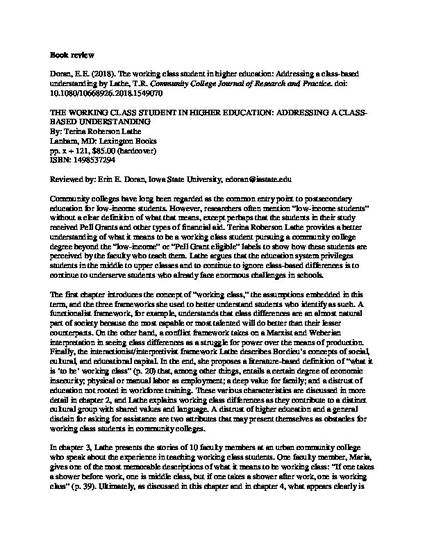
Community colleges have long been regarded as the common entry point to postsecondary education for low-income students. However, researchers often mention “low-income students” without a clear definition of what that means, except perhaps that the students in their study received Pell Grants and other types of financial aid. Terina Roberson Lathe provides a better understanding of what it means to be a working class student pursuing a community college degree beyond the “low-income” or “Pell Grant eligible” labels to show how these students are perceived by the faculty who teach them. Lathe argues that the education system privileges students in the middle to upper classes and to continue to ignore class-based differences is to continue to underserve students who already face enormous challenges in schools.
Available at: http://works.bepress.com/erin-doran/11/

This is an Accepted Manuscript of an article published by Taylor & Francis in Community College Journal of Research and Practice on April 3, 2019, available online at DOI: 10.1080/10668926.2018.1549070 Posted with permission.